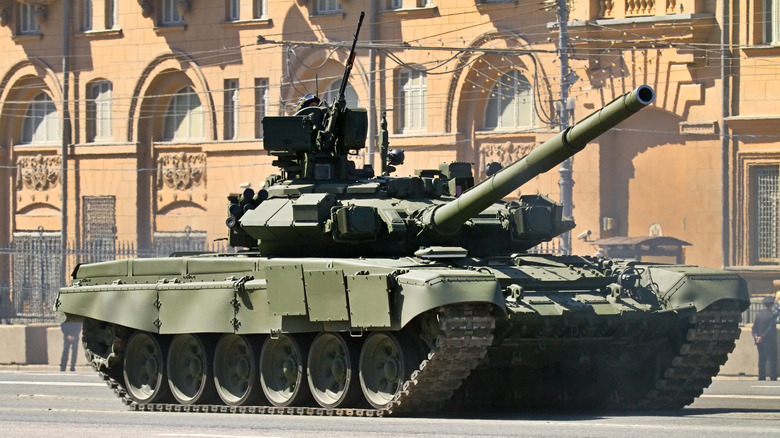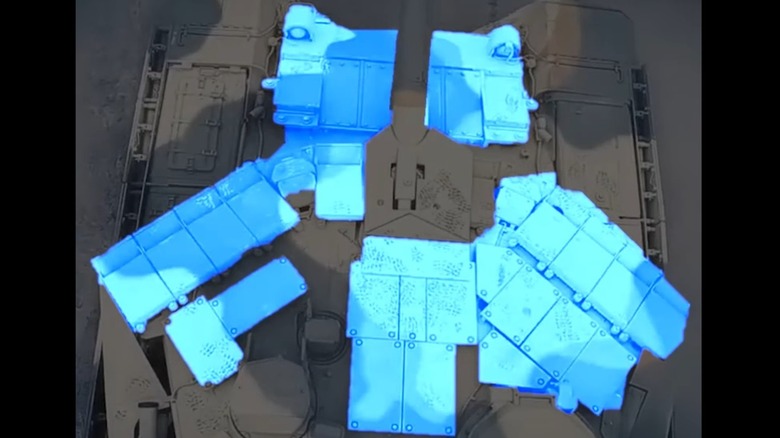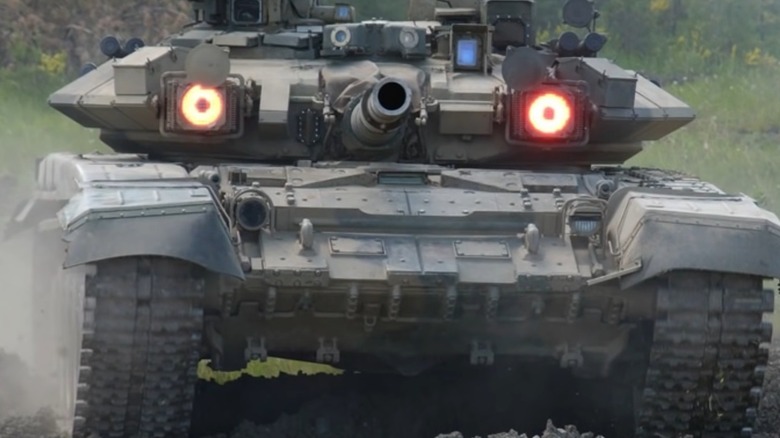Everything To Know About The Russian T-90 Main Battle Tank
Building off the success of the T-72B tank, the Russian T-90 MBT improved the design by adding cutting-edge military technology. The T-90 began its service in 1993 and has participated in several major conflicts, proving to be a formidable force during battle. It's estimated that Russian forces had as many as 1,000 units in 2022 at their disposal. But, according to Forbes, units have been destroyed due to ongoing conflict in the region, and several hundred new units have been constructed. The tank is also used by militaries in Azerbaijan, Turkmenistan, Algeria, and Venezuela, among others.
So, what makes this particular tank an asset on the battlefield, and why is it still in service today? In terms of engine performance, the T-90 tops out at 37 mph and can travel up to 341 miles without fuel reserves, which isn't too remarkable. Hands down, the stand-out feature of this tank is its three-staged protection system that includes steel armor, explosive reactive armor, and the impressive Shtora-1 countermeasures. If you're familiar with everything about Soviet T-72 tanks, it'll provide you with additional details on the successful platform that led to the T-90.
It has explosive reactive armor
The tank, while resistant to small arms fire and even heavy machine gun rounds in some cases, is still vulnerable to shape charges. These shape charges come in the form of anti-tank guided missiles, which can wreak havoc against the military's rolling steel giants. Anti-tank-guided missile systems can be mounted on vehicles or any level surface using a tripod and operated by one soldier. How could the T-90 possibly combat this threat? And before your imagination runs wild with something you may have seen in a Hollywood movie, remember that there are several common misconceptions about tanks you need to know.
Explosive reactive armor is a technology first used in conflict by Israel in 1982 and consists of a three-layer composition of a steel plate, then explosives, and then another steel plate. The system works by detonating out, and the force of the blast counteracts a shape charge, protecting the tank and crew. In footage captured during a battle in Aleppo in 2016, a T-90 tank is targeted by a TOW anti-tank missile. The video captures a T-90 in the distance disappearing behind a large explosion and resulting smoke cloud. A few moments later, the T-90 emerges unharmed from the anti-tank missile due to its explosive reactive armor.
Its countermeasure system is robust
The T-90 MBT has some impressive tricks up its sleeve, namely the Shtora-1 countermeasures that confuse enemies and help hide the tank's position. A tank is a vehicle that doesn't go unnoticed in conflict zones, as its outline is readily apparent, even from great distances. Combine the T-90's visibility with enemy weapon systems that can laser-target it from range, and you have a problem. Fortunately, the Shtora-1 is ready to act and deploys defenses, allowing the T-90 time to react.
First, there is a laser warning system watching the tank's perimeter, which can muddle the targeting technology of opposing forces. If the enemy has trouble painting a target, its attack won't be as successful, and the crew of the T-90 is also alerted to the threat. If Shtora-1 detects a missile, it can disrupt the projectile and automatically deploys several smoke grenades to obscure the T-90's location. While the Soviet T-90 MBT is an imposing presence on the battlefield, it still isn't among the 12 best military tanks in the world in 2023.


